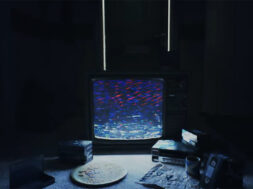De Palma’s sleek conspiracy theory thriller and sleuth slasher film, Blow Out, turns 40 and its message rings in our ears even stronger now.
“Just worry about the scream, all right?”
It’s a stark truth to understand that everything that you see and hear cannot always be trusted and that cinema is the ultimate expression of this form of “deception.” It’s a powerful idea for any film to explore, but it resonates even more in a movie like Brian De Palma’s Blow Out that’s about the artifice of moviemaking as well as the manipulative, obfuscating nature of conspiracy theories. It’s a brilliant thriller that’s able to engage in all of these ideas while it often masquerades as a sleuth slasher film in a way that only doubles down on these themes of deception. It’s a complex endeavor for this movie from the early ‘80s that manages to have the foresight to deconstruct an era that’s barely even started to get rolling yet. It’s a testament to Brian De Palma’s mastery and understanding of the craft. This is apparent in every single one of his movies, but is especially so in Blow Out, a movie that’s even more relevant today than when it was first released 40 years ago.
Blow Out, originally released on July 24th, 1981, crafts one of Brian De Palma’s most captivating stories. An audio engineer, Jack Terry (John Travolta), stumbles upon a car accident in progress while he’s recording sound effects for a slasher movie. Jack can save the life of one of the passengers, Sally Bedina (Nancy Allen), but he’s too late with the other, a hopeful Presidential candidate. Jack gets pulled into his recordings and discovers that this death was actually an assassination and that both he and Sally might be in danger from a massive political conspiracy that’s bigger than the both of them. It’s an addictive narrative, but De Palma intrinsically ties it together with cinema as well as the other passions that drive him in life.
De Palma’s Blow Out undeniably owes a lot to Antonioni’s Blowup and Coppola’s The Conversation, all of which feature parallels between recording and obsession as a means of understanding. However, there’s a lot from Blow Out that makes it a very personal movie for De Palma. The complaints that “Co-Ed Frenzy” producer, Sam, launches at Jack about his frustrations over the same reused audio cues in each of his movies is something that De Palma himself complained about on his previous productions. This extra level of autobiographical reality definitely enhances Jack’s obsessive quest for perfection, and then answers.
Blow Out also knows how to visually bombard the audience in both obvious as well as more subconscious ways. The film often utilizes split-screen for inspired ways to convey information, but the first instance of it in the movie basically spells out its ending in a way that almost feels like it’s there to fuel the type of conspiracy theorists that Blow Out focuses on. A news report teases the Liberty Day celebration that leads to Sally’s undoing while Jack runs through sound effects like a body falling, a gunshot, and glass, all of which are innocuous at the time, but are present at this forthcoming Liberty Day tragedy.
To that end, Brian De Palma was deeply obsessed with the JFK assassination and Blow Out doesn’t just allow the director to indulge in those interests, but it’s basically him making his own Zapruder film. Blow Out presents these ideas through heavy analysis of a post-Vietnam War world that’s drenched in Reagan optimism that unabashedly celebrates America, something that’s only become more exceptional in recent years, for both better and for worse.
Blow Out uses Jack and Sally’s struggle to demonstrate how what people see and hear can mess with them and actively work against them. Characters need to actually see things to be sure of them, even when they’re otherwise positive of their validity. One of the film’s early uses of split-screen and intense focus from a split diopter lens depicts Jack recording wildlife on one side of the screen while the corresponding half of the screen actually shows these creatures to prove that they are what Jack hears. It’s the perfect visual representation of the film’s quest for truth, yet filtered through De Palma’s heightened style.
Blow Out is a movie full of contradictions, not unlike conspiracy theories, which actually manage to strengthen the text. The movie contains contrasting tones that compete against each other for supremacy. Blow Out notably begins with its careful exploitation of the audience. The masterful opening POV sequence occasionally has a moody “killer theme” that turns up on the soundtrack during the slasher’s violent acts, which increasingly overpowers the playful party music playing in the dorm unsuspecting students inside have no idea that they’re in danger. Just like how the music does this, the visuals also create this odd dissonance as the audience tries to figure out what’s going on until they finally realize that this introduction is a ruse and part of the artifice that’s inside of Blow Out, rather than Blow Out itself. It’s the first scene in the movie and also the first time in the film that the audience is forced to reckon with this while Blow Out continually toys with what is reality, what is art, and where the two overlap.
It’s all a lie.
To go one step deeper, Garrett Brown, the creator of the Steadicam, was well-practiced with the equipment after his work on The Shining, but this piece in Blow Out is intentionally clumsy because it’s supposed to resemble a low-budget horror movie. It wants to mess with the audience and use the quality of the camerawork to become the first clue that this is actually a movie within the movie. Garrett actually laments that he couldn’t shoot the opening POV sequence properly and was forced to make it look so schlocky, but that’s the magic of this De Palma introduction. It achieves a more technologically advanced and psychologically enriching version of Halloween’s legendary opening sequence and Blow Out’s introduction genuinely helped popularize the use of the Steadicam and showcase its versatility as a filmmaking tool. It’s a sublime pairing between Garrett Brown during the infancy of the Steadicam’s development and Vilmos Zsigmond’s ever-growing talents as a cinematographer.
This illusory artifice that kicks off the movie also bookends Blow Out. Another powerful example of the blurred lines between art and reality is what concludes Jack and Sally’s story. Burke’s assassination plan that takes out Sally is intself based around subterfuge and fabricated panic that’s exactly the type of scheme that conspiracy theorists would develop. On a deeper level, Sally’s screams of terror fail to be heard and she’s unable to receive help because displays of riotous Americana literally drown her out; whether it’s the noise of the fireworks, the public cheering, or the celebratory music. Her corpse basks in the glow of red, white, and blue lights.
The one time that Jack needs to hear Sally’s scream, he can’t, and it’s what costs her her life. It’s devastating, but even harsher of a blow because of Jack’s aural life and how important listening is to him. It’s a horrifying reality about how the dangers of patriotism can strangle America and bury what’s important, which is relevant then, but even more frightening now with how the news and social media can filter out what doesn’t fit their narrative and highlight America’s benign successes. Pro-America messages can overpower what’s really important and strangle the cries for help in a figurative sense, just like Blow Out literally does, and it was made forty years ago.
Brian De Palma gets so many good and chilling performances out of John Lithgow, but his villain in Blow Out, the mysterious Burke (who’s based on G. Gordon Liddy to some degree), is seriously some of the actor’s strongest work. Burke’s appearances here are incredibly brief, but Lithgow makes every second count. Lithgow’s performance as Burke is also a fantastic example of how the weight and intensity behind a villain can mount through their actions, even when they’re not physically being seen on the screen, so that when they finally do show up it’s deeply cathartic. It becomes the satisfying culmination of all of these sinister machinations up until this point. The camera moves with precision during Burke’s calculated murders in contrast to the klutzy maneuvers from “Co-Ed Frenzy.” De Palma uses the language of this cinematography to communicate that Burke is the real deal and someone to worry over.
Burke’s plan is so needlessly more morbid than it needs to be, but this also speaks to its dark brilliance. His target is only Sally, but he proceeds to kill many women who look like her so that her eventual death is misconstrued as the work of a serial killer’s motive instead of a targeted attack. It’s chilling, but also speaks to how complex conspiracies and actions from political terrorists only highlight how little the public really knows. This kind of stuff can happen underneath everyone’s noses with nobody having any idea because of its stealth and invasive nature.
So many De Palma movies about men trying to unsuccessfully save women–perhaps harkening back to De Palma’s own childhood and his sleuthing efforts to videotape his father’s affairs to protect his mother in the process–but Blow Out presents one of the starkest and nihilistic versions of this idea wherein Jack doesn’t only fail to save Sally, but her death and his defeat are forever immortalized on celluloid to entertain millions of audience members. No one can rewind the footage to change Sally’s fate like in “Co-Ed Frenzy.” It’s the grim irony of this theme that recurs throughout De Palma’s works, especially for a filmmaker who so often uses cinema as the ultimate expression of the soul.
This tragic ending comes as such a blow and feels very much representative of the decisions that happen in movies forty years ago versus today. Emotionally, Jack’s final embrace with Sally is a lot to take in, but De Palma also guarantees that it’s just as visually expressive. What follows is one of the most cinematic moments that’s ever been committed to film. The sheer extravagance of the exploding fireworks as Pino Donaggio’s score swells and Travolta loses himself in Jack’s sadness is just a masterpiece. Whether it’s intentional or not, the galaxy of light that’s cast over the dorm room from an illuminated disco ball during Blow Out’s opening scene also works as a visual counterpoint to these fireworks that works as another element that bookends the movie, both through reality and the illusion of cinema.
Sally’s death breaks Jack and the brief epilogue that follows only presents a more depressing case for the character’s future. It’s the very fact that Jack is now hollow that he allows himself to put Sally’s death scream into the movie. An optimistic Jack would still hold back, but now he’s just shattered, cynical, and forever changed. And all he did was follow his heart and do exactly what a good person should have done in his situation. It’s a message that stomps down the individual, but beautifully articulates the many themes of De Palma’s movie. It’s why Blow Out still stands out nearly half a century later. This somber conclusion is what allows Travolta to deliver the best work from his entire career, and in only four words: It’s a good scream.
It really is.
Blow Out can be rented on Amazon Prime and AppleTV+ and is streaming for free on Pluto TV.













